Compass "Hirose Design" Decaleurs

Compass is proud to introduce what we consider the ultimate decaleur. Combining the ideas of René Herse and H. Hirose with Nitto’s craftsmanship, the new Compass decaleurs are strong, light, beautiful and reliable.
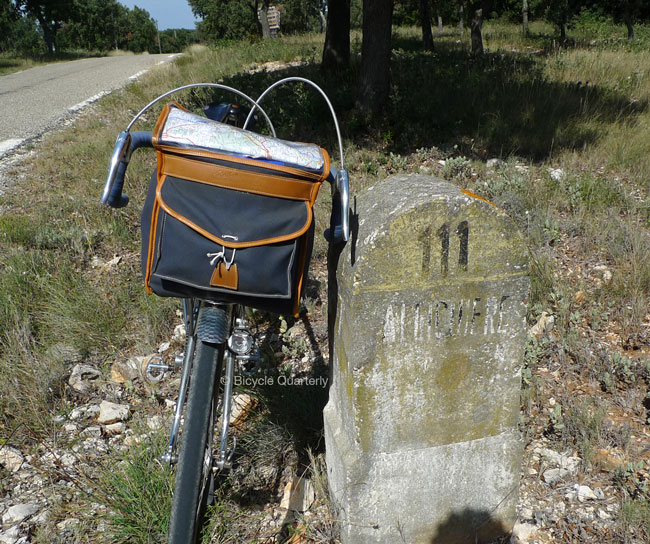
Here is why decaleurs are important: We love handlebar bags. They are a great way to carry the things you need during your ride: accessible without having to get off the bike. The map holder on top greatly reduces your chances of getting lost, since you have your map or cue sheet visible at all times. And with a handlebar bag, your bike handles better than with a rear bag: It’s much easier to ride out of the saddle – none of that “tail wagging the dog” effect.
A little less important, the bag shields your legs when riding in the rain. On chilly mountain descents, you can tuck your hands under the flap for a little extra protection from the wind. Handlebar bags are more aerodynamic than rear bags, too. (We tested that in the wind tunnel.) Lots of pluses…
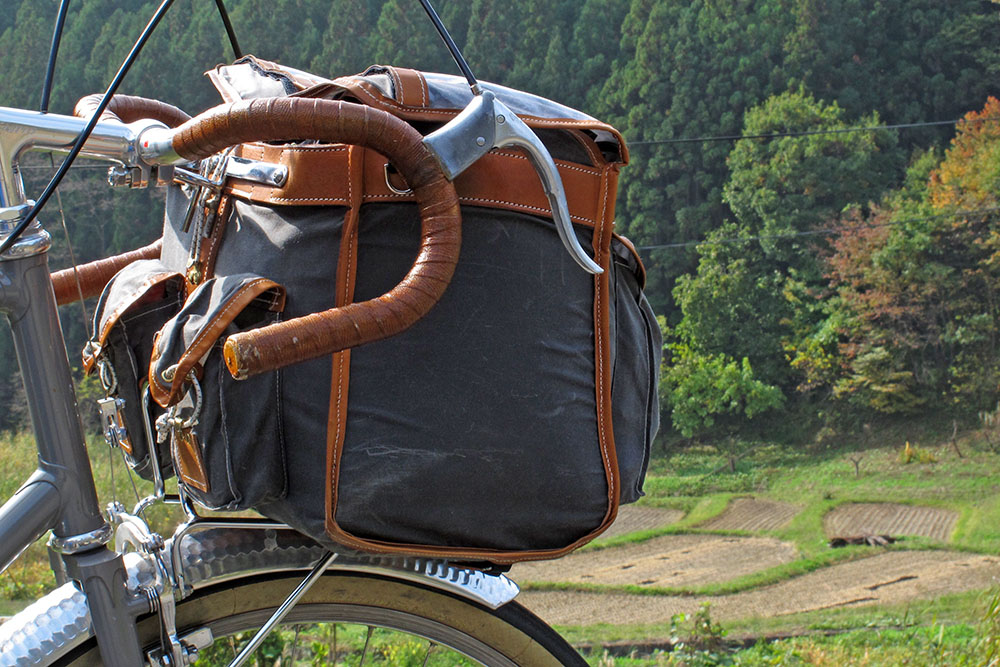
The only minuses are that
a) you need a rack to support the bag optimally (we’ve solved that with the various racks Compass now offers), and
b) the bag attaches to the handlebars, which can get in the way of your hands in the “on the tops” position.
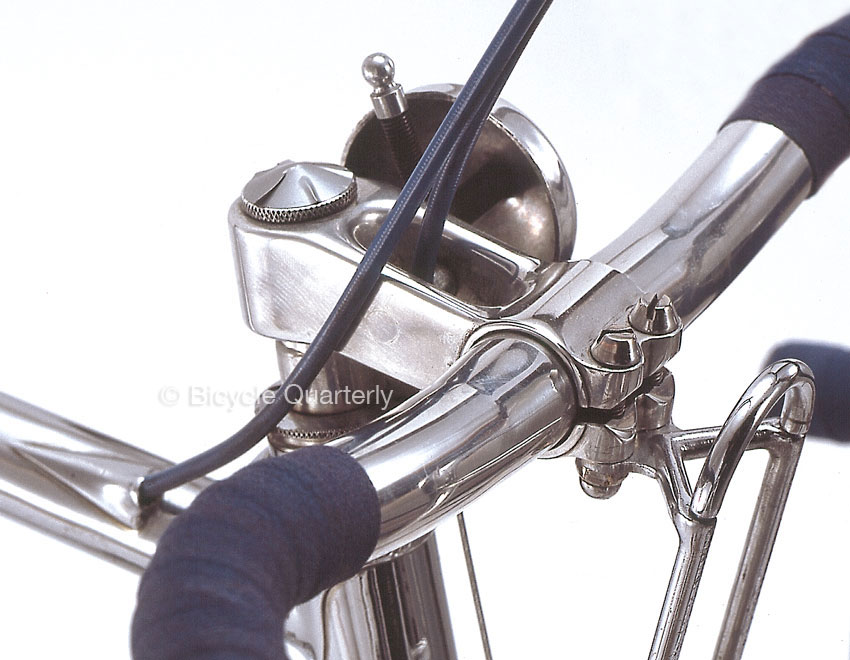
Enter the decaleur, which keeps the bag away from the handlebars. (“Decaler” means “to move out of the way” in French). A good decaleur also provides a handy quick-release for your bag. Just pull the bag upward, attach your shoulder strap, and take your important belongings with you when you lock up your bike. (The photo above shows the decaleur on a 1952 René Herse. The U-shaped piece on top prevents water from getting into the decaleur tubes when no bag is mounted.)
All this would be great, if decaleurs didn’t have their own problems. There are many designs, but none of the off-the-shelf versions have worked well in the past. One popular model attached to a stem spacer – and quickly broke from the vibrations as the bike rolled over rough roads. Another is adjustable in every conceivable way, but the adjustments never stayed put. A friend finally had his brazed together to make it “non-adjustable”, but then it broke, too.
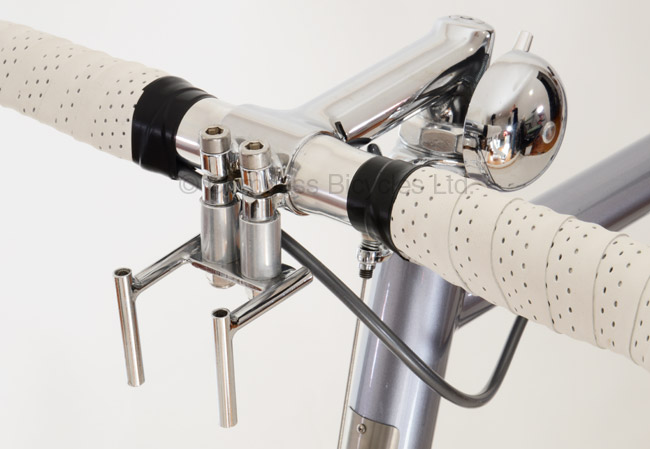
The best solution is the simple two-prong decaleur that attaches to the stem’s handlebar clamp bolts, as pioneered by the great French constructeurs. These decaleurs are strong and reliable, provided you have a perfect friction fit between the mating parts on the bag and on the stem. The constructeurs achieved that fit through careful handwork, but this has been difficult to recreate in a production setting.
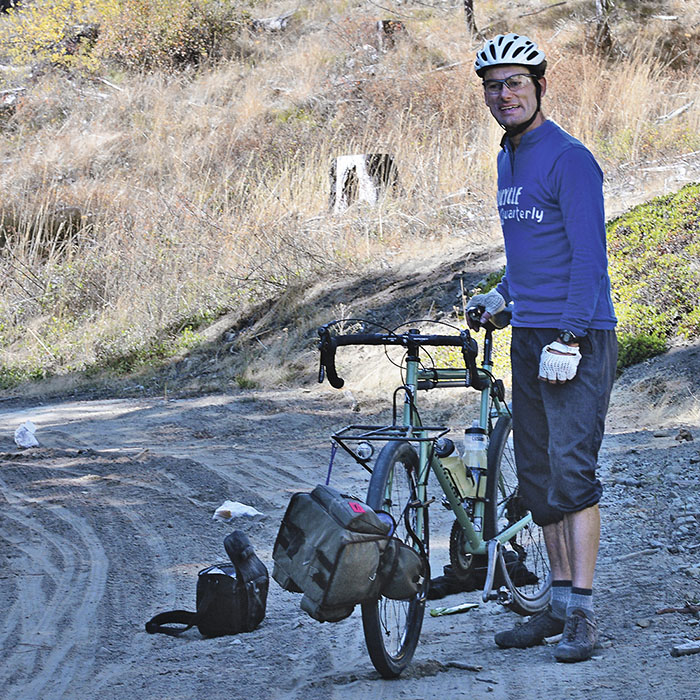
Modern versions of these decaleurs often had too little friction. On Bicycle Quarterly test bikes, no fewer than four handlebar bags have flown off mid-ride. It’s not much fun… On one bike, I was braking for a stop, and the bag flew forward, landed in front of the bike, and I rode over it. On another test ride (different bike), a BQ camera met an untimely demise when the bag ejected during a gravel descent at high speed. The third one was a poorly mounted decaleur that broke off. And the fourth bike didn’t have a decaleur, instead attaching the bag only to the rack (above)…
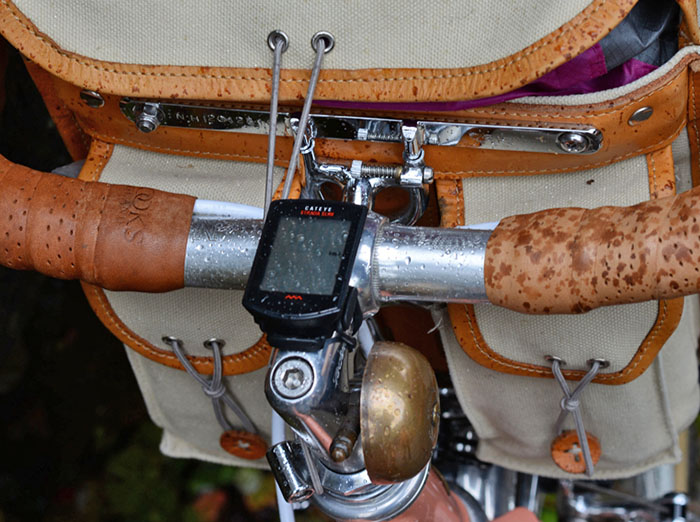
When I visited Tokyo in 2014, I finally saw a solution that looked promising. H. Hirose had designed a simple locking mechanism which prevented the bag from coming off inadvertently. A spring-loaded pin on the stem-mounted part of the decaleur engaged with a groove on one of the prongs on the bag mount. Brilliant!
To release the bag, you push in the spring-loaded pin and pull the bag upward. To install it again, you align the two prongs on the bag with the tubes, and push the locking pin as you slide the bag downward. Release the pin after the bag is all the way down, and the bag is locked. It couldn’t be simpler.
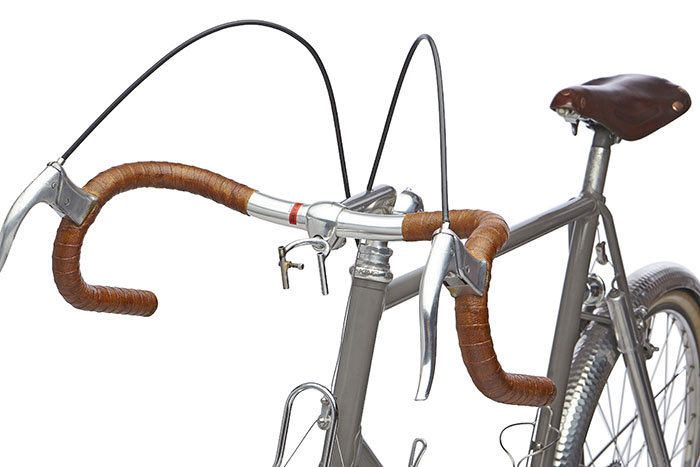
As soon as I got back to Seattle, I modified the decaleur on my “Mule” with a similar locking mechanism to test it (above). I am happy to report that it has been working flawlessly for over two years now.
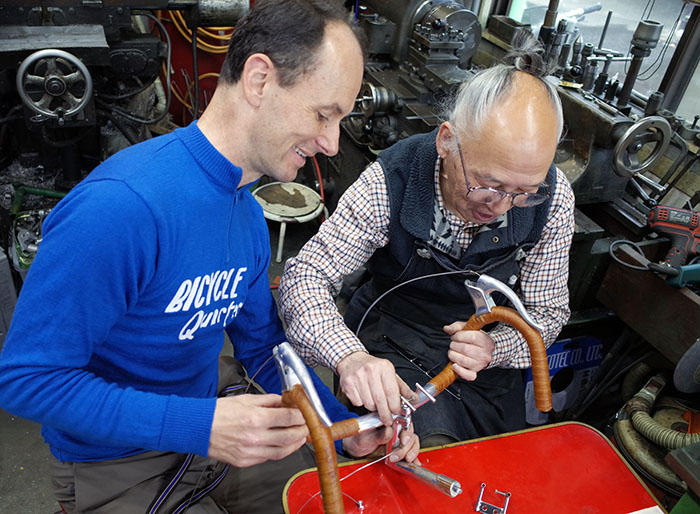
The next time I visited Tokyo, I asked H. Hirose whether Compass could license his design. He examined my prototype – and the “Mule” I had brought along with it – for a long time, before he agreed.
While we were coming up with a new design, we thought of other ways to improve the decaleurs that Compass was selling at the time. René Herse’s last bikes had decaleurs that joined the two tubes to form a “U”. That is much stiffer, so there is less risk that the decaleurs will bend and the tubes will get misaligned.

We worked with Nitto to put this ambitious design into production. It’s hard enough to make as a one-off, but as a production run, it’s even more challenging. We figured that if anybody could do it, it would be Nitto. And they came through.
Now we are proud to introduce the new Compass “Hirose Design” decaleurs. We offer one version to fit Compass and Grand Bois (and classic René Herse) stems and another for Nitto NP (Pearl) stems. We feel confident that these are the best decaleurs anywhere – a combination of the expertise and experience of René Herse and H. Hirose. And handlebar bags flying off bikes will be a thing of the past!
Click here for more information about Compass stems and decaleurs.


